Participation
What is Participation for Students with OI?

The International Classification of Functioning, Disability, and Health (ICF) defines participation as the extent of engagement in nine different domains, including “self-care, interpersonal relationships, schooling, and employment” (Colver, et al., 2012).
Families of students with OI reported that enjoyment, being in the LRE, and gaining independence to perform tasks to the greatest extent possible are all important factors to active participation (Chiarello, 2017).
Participation of individuals with OI may look different, depending on the severity of their motor impairment.
- Participation of students with OI can mean they engage in activities independently with adaptations to materials, tools, or amount of time allowed;
- engaging independently with partial assistance;
- engaging with partial or full physical assistance;
- or engaging in alternative activities that provide a more meaningful experience for the individual (Coleman, 2012).
Regardless of what participation physically entails for individuals with OI, the key factor is engagement.
Engagement includes the affect or feelings, motivation or thoughts, and social involvement or the behaviors of the person in question (Chiarello, 2017).
Why Participation Matters

Students with OI are entitled to participation as a basic human right, but face access and opportunity barriers to accessing this right (Shakespeare, 2020).
Participation in one’s environment is recognized as a universal measure of health, and is the primary goal of rehabilitative therapies (Anaby et al., 2020; Graham et al., 2019).
Meaningful participation of students with physical disabilities in their environment has also shown to have secondary health and motoric benefits (Anaby et al., 2020).
Increased levels of participation in children with physical disabilities has also shown to assist with the development of friendships, skill mastery, self-determination, self-efficacy, and a sense of purpose (Chiarello, 2017).
As levels of participation within one’s natural routines increase, so do opportunities to learn additional skills and therefore further increase participation, creating a transactional feedback loop (Wilcox & Woods, 2011).
- When participation is restricted, students are unable to access experiential learning opportunities and interactions with communication partners are limited, additionally restricting learning.
These conclusions support the idea that educational goals and outcomes of students with orthopedic impairment should be participation-focused.
